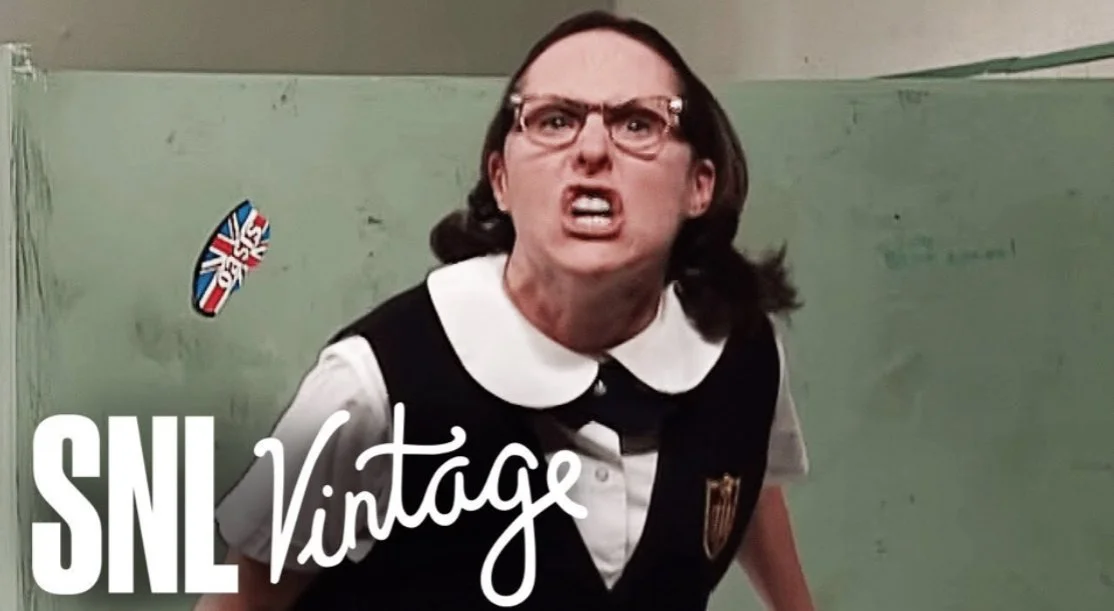Summers in the Soft Glow: My Hello Kitty TV and Me
Written by Kai Swanson
My summers from age seven to twelve hummed quietly beneath the low glow of a Hello Kitty television—a plastic, unapologetically pink object gifted to me on my seventh birthday, during a year when my awkward youth was especially glaring—two years younger than my peers and perpetually mismatched clothes. Yet, reflecting now, I am grateful for that youthful out-of-step appearance, as it quietly shaped my individuality and resilience. This television, often dismissed as a distraction or mindless indulgence, became something profound: a window, a mentor, and a bridge, quietly extending the limits of my rural, insular Southern community.
No childhood photographs remain of my own TV, but a Flickr snapshot circa 2005 vividly captures its essence.
Behind my bedroom door, bedazzled headphones sealed tightly around my ears, I quietly defied parental restrictions by plugging into the AUX port late at night, or even discreetly while they were still awake. This act allowed me to slip gently into a world more comforting and expansive than the childhood I inhabited, insulating myself from the muted conflicts in adjacent rooms and rhythmic bass of neighborhood disturbances. Contrary to the cultural anxiety around television's supposed ability to dull minds, the programs I consumed—"In Living Color," "Saturday Night Live," "Mad TV," and "Monty Python"—were deeply formative, expanding my understanding of irony, empathy, and subtle resistance. Through repeated viewings, these comedic sketches revealed layers of cultural critique and human complexity, shaping an analytical lens that defied simple characterizations of television as intellectually numbing.
Monty Python's“ Life of Brian”—a comedic doorway into a world far beyond my childhood understanding, offering secret playground currency and a rare bridge of connection with my father.
The pink TV glowed warmly, contrasting sharply with the satirical bite and subtle rebellion hidden within the shows it broadcasted. "Monty Python’s Life of Brian," watched furtively through a hand-me-down DVD player, served as my initiation into adult humor. Understanding its sophisticated satire prematurely allowed me entry into the clandestine conversations of older kids, providing fleeting moments of acceptance. More significantly, it revealed to me that humor was a cultural currency (especially if I brought these adult jokes to the playground) dismantling the simplistic narrative that television merely isolates and dulls; instead, it offered rare, invaluable moments of social engagement.
Comedy constructed fragile but meaningful bridges within my fractured home. My father's emotional inaccessibility contrasted starkly with the warmth generated when we shared laughter over Monty Python’s "Holy Grail." Humor became our private language, subtly defying the traditional Southern silence around familial dysfunction, suggesting that even within supposed passivity, television fostered critical dialogue and connection.
Characters from "In Living Color," such as Homey D. Clown and Fire Marshal Bill, provided playful critiques of authority and conformity. Jim Carrey’s exaggerated physicality, Damon Wayans’ sharp-edged parodies, and Debra Wilson’s daring satire offered quiet encouragement to question authority. "Mad TV’s" Ms. Swan and Stuart gently unraveled societal stereotypes, exposing the contradictions embedded within cultural norms. "Saturday Night Live" offered Molly Shannon’s Mary Katherine Gallagher, whose anxious ambition resonated deeply, illuminating how humor could critically reflect the complexities of social expectation.
Molly Shannon’s Mary Katherine Gallagher on“ Saturday Night Live”—a comedic embodiment of anxiety, ambition, and youthful defiance, reflecting my own quiet rebellions and laughter-filled summers.
However, there was an undercurrent of tension, too. The societal imperative to constantly produce—particularly acute in my community—rendered leisurely viewing suspect, a marker of intellectual or moral decay. But television quietly contested this narrative. Through these comedic sketches, I wasn't merely entertained—I was actively learning how to reframe the anxieties and absurdities of the world around me into punchlines, quietly subverting the relentless drive toward constant productivity by turning everyday tensions into humor.
My pink Hello Kitty TV symbolized more than youthful nostalgia; it embodied quiet intellectual rebellion. Privately treasured against familial and social expectations, it cultivated a critical awareness and taught me the subtle strength of laughter and leisure as tools for understanding and resisting conformity. Rather than dulling my intellect, television sharpened my analytical skills, offered cultural critiques, and introduced perspectives that extended well beyond the limitations of my physical environment.
“Privately treasured against familial and social expectations, it cultivated a critical awareness and taught me the subtle strength of laughter and leisure as tools for understanding and resisting conformity.”
Eventually, the TV found a new home, sold at a yard sale to another young girl. I often wonder if she discovered the same subtle empowerment within its pink glow. Beyond my own experience, I hope this reflection prompts broader reconsideration: televisions that are often trivialized, dismissed as mind-numbing, dismissed as fostering unhealthy binge-watching—yet binge-watching itself shouldn't carry shame; it offers a necessary form of catharsis, a means of reframing our worlds through immersive storytelling, yet possess the power to connect and quietly challenge prevailing suburban norms—those quietly enforced rules dictating a proper way of living, often weaponized by certain groups to uphold their narrative and maintain control through subtle ostracization, uniting minds shaped not merely by their environments, but by quiet rebellion alike.



